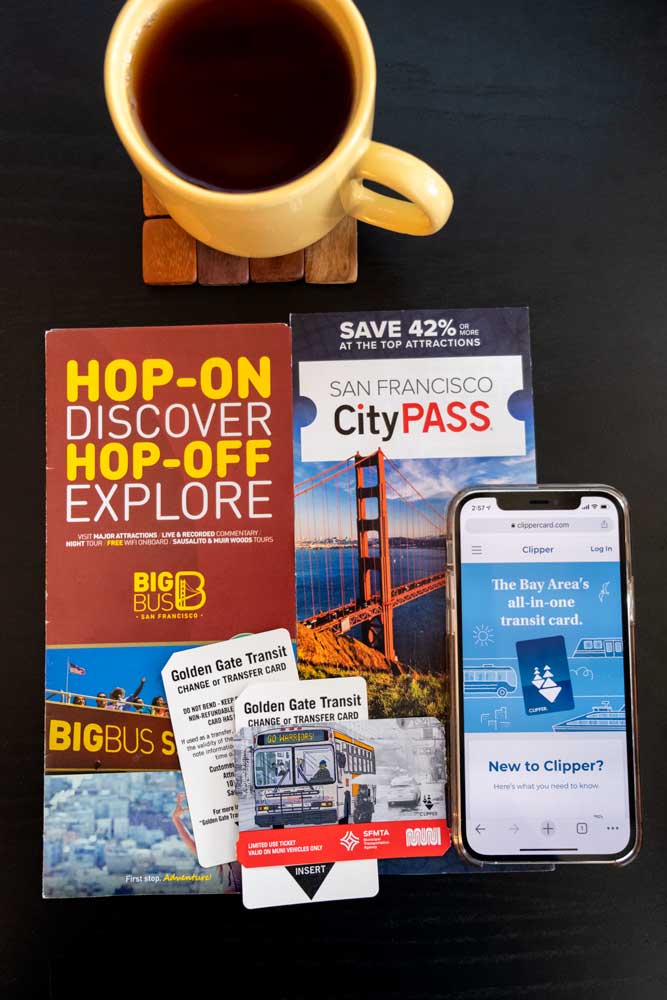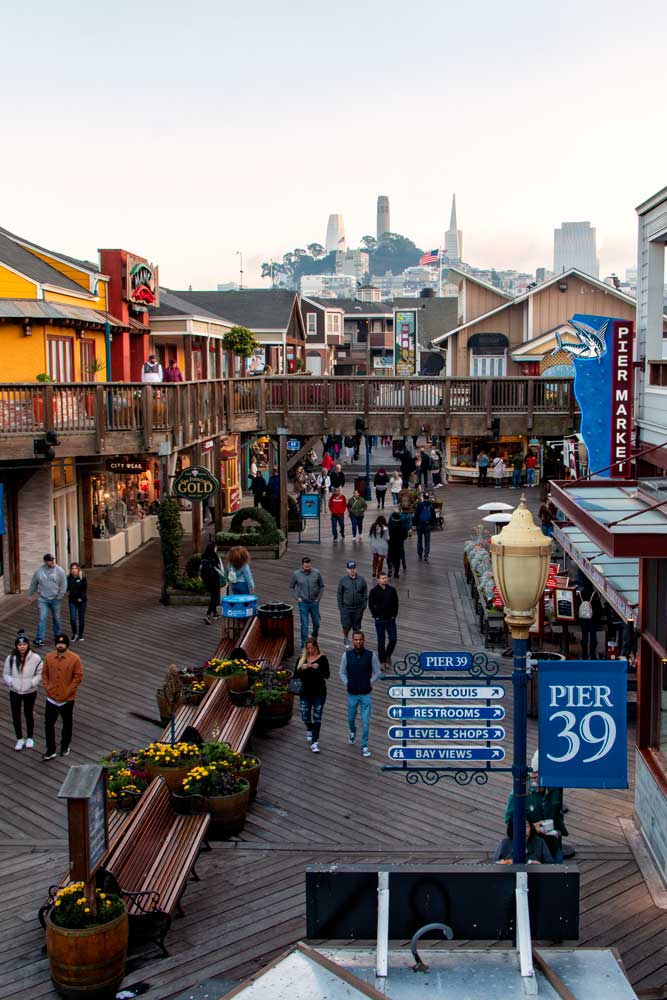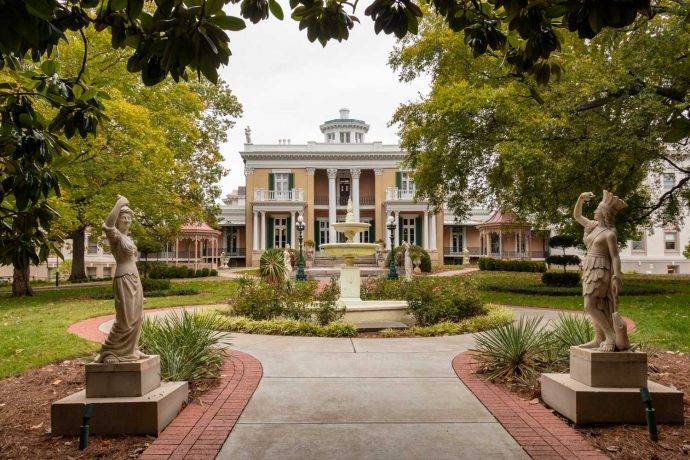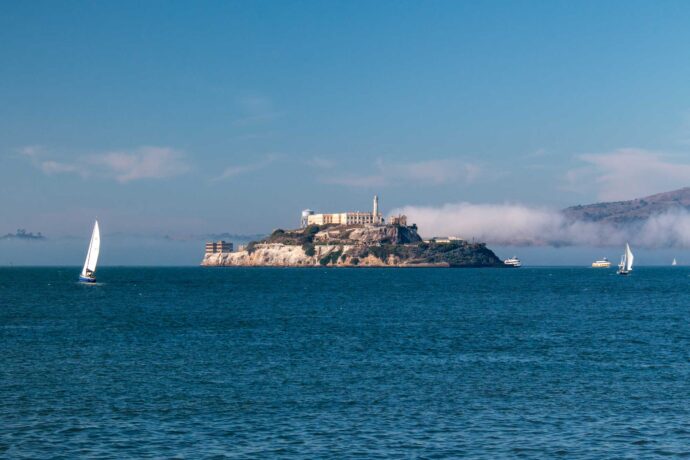I found it tricky to navigate public transportation in San Francisco. Therefore, I would like to spend some time explaining the ins and out of the system, so you won’t make the same mistakes I did. This is by no means an exhaustive list, but I hope that this guide to getting around San Francisco will provide you enough of an overview to get around the city and decide what best fits your needs.
Table of Contents
Getting around San Francisco with public transportation
Bay Area Rapid Transit (BART)
If you arrived at the San Francisco International Airport and want to get downtown, your best option is to take a free AirTrain to a BART train station. At the BART station, you can purchase a ticket at one of the ticket machines. Then, scan your ticket at the gate and wait for the next train. If you arrived at the Oakland International Airport, you can also take BART to downtown San Francisco. Just follow the signs for the BART train station when you leave the airport terminal.
Cable cars
Cable cars are San Francisco’s historic cars and a tourist attraction. They only run in downtown San Francisco from Fisherman’s Wharf. You just hop on and hop off. Being a tourist attraction, they are a bit pricier than other forms of public transit.
Muni
Muni is the San Francisco bus system. While taking buses is pretty straightforward, locating a bus station can be tricky. Sometimes they come in a familiar form of bus shelters, but oftentimes you have to look for clues around you: yellow or white paint on street poles with bus numbers.
Muni Metro
As the name implies, Muni Metro is the San Francisco metro system. In downtown San Francisco, Muni Metro rails are underground, and metro stations are a part of underground stations sometimes connected with BART. Pay attention when you enter the station, so you don’t go to the wrong place, and pay more for entry at the gate. Outside of downtown, Muni Metro is aboveground and metro stations are on the island in the middle of the street.

Paying for your ride
Cash
Your can buy a ticket as you need one. The ticket price depends on the route you’re taking. This works well for bigger stations with ticket machines. Otherwise, you have to purchase a ticket from a simplified machine by the bus driver when you enter a bus, which requires exact change in exchange for a physical ticket.
Clipper card
Instead of using a physical ticket, you can opt for a Clipper card that you can load money on. You can get a Clipper card at any BART station. You need cash or a debit card to load money on your Clipper card. There is a fee for the physical card, but you can use it for all public transportation in the city including cable cars. If you use the Clipper card, your tickets come at a reduced price. At BART stations, you scan your Clipper card at a gate; on Muni busses or Muni Metro, you scan it upon entering the vehicle. Alternatively, if you plan to use public transportation throughout your stay and are staying for a longer time, you might want to download the app on your phone to scan instead of using a physical Clipper card.
CityPASS
CityPASS also offers unlimited rides on the Muni system and cable cars with the addition of selected city attractions. Explore San Francisco CityPASS to decide if it is a good option for your interests.
Muni Visitor Passport
Instead of worrying about having exact change for a ticket or figuring out the Clipper card and how to load money on it, you can get a Muni Visitor Passport that gives you unlimited rides on the Muni system and cable cars. You can purchase a 1-day, 3-day, or 7-day Muni Visitor Passport on Clipper, through the MuniMobile app, or at city sales locations.
Alternative ways of getting around San Francisco
Big Bus
If using public transportation sounds too complicated, or if you have limited time to explore and want to focus on the city’s main attractions, consider Big Bus. Big Bus takes you through San Francisco’s main attractions, including the main locations downtown, the Golden Gate Bridge, and even Treasure Island. You can pay for a one-day or a two-day pass, and you just hop on and off as desired. I found that the only attraction worth visiting that is not currently on a Big Bus schedule is Twin Peaks. Buses run frequently, and you can get an app that shows real-time bus location with timings and route overviews.
Bike
Another way of avoiding the hassle of commuting in the city is renting a bike. This is especially true for exploring larger areas such as the Golden Gate Bridge, which can take 40 minutes to cross on foot, or the vast Golden Gate Park with its many attractions.
Car
Depending on where you’re staying and what your plans are, you may consider renting a car. This can be a pricey option, considering the rental cost, expense of gas, and parking – not to mention the time and frustration of getting stuck in traffic. Nonetheless, it can be a timesaver for some activities. You’ll find places that offer free parking such as Baker Beach or Twin Peaks.
Airports have major car rental locations nearby, with frequent shuttles back and forth from the airport. If you stick to the San Francisco area, there are no tolls. The only exception is entering San Francisco through the Golden Gate Bridge. If you plan to drive across the San Francisco Bridge, you will need to pay a fee to get back into the city. There is no stopping on the bridge at any time. Visit this site to pay for the toll either before or after crossing the bridge. If you decide to rent a car, make sure not to leave valuables in the car. Car robberies are an everyday occurrence in San Francisco.
Ridesharing apps
Another way to avoid the hassle of figuring out where things are and how to get to them is using ridesharing apps. Uber or Lyft can easily calculate the time and cost of getting to locations of interest. You can get a ride by yourself or share a ride with someone to save money. Sometimes a car is the best way to get to certain places such as Twin Peaks, which otherwise require walking up the hill from a bus stop.
On Foot
You will find that once you get downtown, several attractions are nearby, and your best option is walking. This can also help you explore more of the city instead of just stopping at main attractions, while also getting your steps in for the day.
Overall
I hope this guide to getting around San Francisco provided some clarity on how to best navigate the city. If you have any questions, share them in the comments. For ideas on planning a trip to San Francisco, check out my proposed itinerary. Happy sightseeing!









No comments